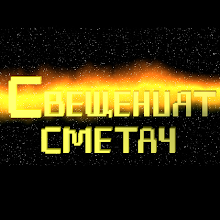The Godfather of AI is *reproducing* ideas of the Child Prodigy of the Thinking Machines 24-22 years later*: *(Part I of the matches):
The Child: Todor Arnaudov, 17 years old, 12.2001, from: "Man and Thinking Machine: an Analysis of the Possibility of Creating a Thinking Machine and Some Shortcomings of Humans and Organic Matter in Comparison to it.", The Sacred Computer, #13 (translated from Bulgarian with ChatGPT): "[before the citation begins, there are definitions about consciousness, related to what's now popular as an easier problem of consciousness" - intelligence as cognitive capabilities, behavior etc. vs the "hard" problem - spiritual, subjective experience etc. - see the work, the Theory of Universe and Mind etc.]):
"... If this is what consciousness is, then the thinking machine will undoubtedly have it. But if consciousness is the 'feeling of sensory perceptions,' then intelligent behavior does not necessarily mean the presence of consciousness, just as the lack of intelligence cannot prove the absence of consciousness. Personally, I am not entirely sure that consciousness in the sense of the 'feeling' of thoughts and emotions—experienced the way we humans (including myself) feel it—is solely the result of the joint activity of billions of neurons in the brain, of the complexity of their connections, and so on. It's easy to ask: where exactly is our 'self' located? Maybe 'we' are in the totality of billions of neurons? Fine — but if we remove one neuron from the whole (something that happens constantly, as neurons continuously die and are not replaced), and then another, and another, and so on — at what point do we cross the boundary after which a person will lose their self-awareness, will no longer feel what is happening, even though their external behavior still suggests that they do?", Todor Arnaudov, 17 years old, 2001
* The original in a geocities' archive:
https://www.oocities.org/eimworld/eimworld13/izint_13.html (or see the excerpt below)
The Godfather (and Grandfather): * Geoffrey Hinton, 77 years old, June 2025 in an interview:
"Godfather of AI: I Tried to Warn Them, But We’ve Already Lost Control! Geoffrey Hinton",The Diary Of A CEO
https://youtu.be/giT0ytynSqg?t=3939 Transcript from Youtube:
" suppose i take your brain and i take one brain cell in
1:05:44: your brain and i replace it by this a bit black mirror-l like i replace it by
1:05:50: a little piece of nanotechnology that's just the same size that behaves in exactly the same way when it gets pings
1:05:56: from other neurons it sends out pings just as the brain cell would have so the other neurons don't know anything's
1:06:02: changed okay i've just replaced one of your brain cells with this little piece of nanotechnology; would you still be
1:06:08: conscious now you can see where this argument is going yeah so if you replaced all of them as i replace them all at what point do you stop being conscious?
--> The matches continue ... (At least two important points and I didn't watch the whole)
Visit the virtual conference SIGI-2025: https://github.com/twenkid/sigi-2025
* The Godfather or the Grandfather - both are true in the context of the "Child", LOL.
An AI joke:
How the Godfather knows ... -- this will go to another post or a short on Youtube; also do you know why Connor ... well - maybe you'll guess, but verify it later.
Оригинал на български (the bold font is from the original text):
"... Ако това е съзнанието, ММ несъмнено ще го има. Но ако съзнанието е "усещането на сетивните възприятия", то разумно поведение не значи непременно наличие на съзнание, както и липсата на разум не може да докаже отсъствието на съзнание. Лично за себе си не съм напълно сигурен, че съзнанието в смисъл на "усещане" на мислите и чувствата по начина, по който го усещаме ние хората (в частност и моя милост), се дължи само на съвместната работа на милиардите неврони в главния мозък, от сложността на връзките и пр.. Лесно да се запитаме къде точно се намира нашето "Аз" ? Може би "ние" сме в съвкупността от милиарди неврона? Добре, ако отстраним един неврон от цялото (това е нещо, което се случва постоянно, невроните непрекъснато умират и не биват замествани от нови)? Ако продължим и премахнем още един, и още един и така нататък, кога ще стигнем до границата, след която човекът ще загуби своето самосъзнание, няма да усеща това което се случва, въпреки че външните му прояви показват, че го усеща?"




